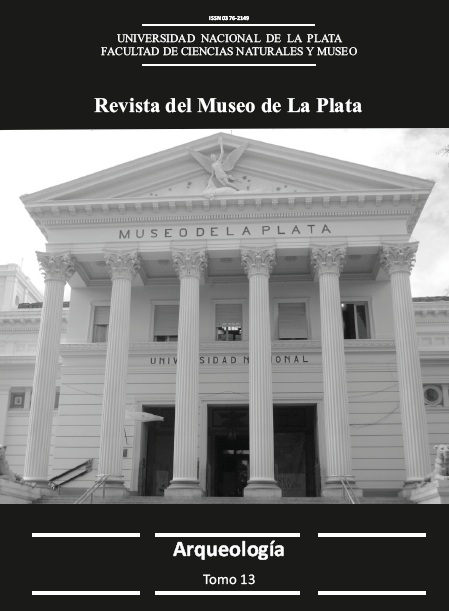Determinación de maderas carbonizadas procedentes de contextos arqueológicos de la Tradición Guaraní
Keywords:
Anthracology, Guaraní Archaeology, Upper Uruguay River, Deciduous Forest,Abstract
This paper presents the methodology and results of an exploratory study of taxonomic identification of charcoals sampled in archaeological contexts. The analyzed samples come from two archaeological sites located on the left bank of the upper Uruguay River (municipality of Porto Mauá, Rio Grande do Sul, Brazil). The sites Barra do Santo Cristo 1 and Três Bocas 2, with radiocarbon dates between ca. 410 and 500 years BP, were residential settlements attributed to the southern Guaraní occupation. While these contexts present low preservation of organic remains, it is common to find scattered charcoals in occupation layer and concentrated in structures interpreted as hearths. For this study, macroscopic observations were conducted on selected charcoal samples from each site and then supplemented with scanning electron microscopy analysis. Based on the anatomical characteristics of the three diagnostic sections, comparison with present types of wood and specific literature, it was possible to determine the taxonomic class of plant macroremains. So far, most of them were assigned to Lauraceae. Finally and according to information provided by this analysis, we propose interpretations about wood availability in the environment, environmental characteristics at the time of the occupations and the selection of wood for fuel.Downloads
Published
Issue
Section
License
La publicación en la RMLP se realiza bajo los términos de la licencia de uso y distribución Creative Commons BY-NC-SA 4.0 para Argentina (https://creativecommons.org/licenses/by-nc-sa/4.0/) que permite a terceros la distribución, la copia y la exhibición del artículo siempre que citen la autoría del trabajo, la publicación en la RMLP, número concreto y las páginas en la que encontraron la información. No se puede obtener ningún beneficio comercial y no se pueden realizar obras derivadas con fines comerciales que no autorice la editorial. Si se remezcla, transforma o construye sobre el material, deben distribuir sus contribuciones bajo la misma licencia que el original.
La puesta a disposición del artículo en la RMLP supone para los autores argentinos el cumplimiento de lo establecido en la Ley 26899 de Creación de Repositorios Digitales Institucionales de Acceso Abierto, Propios o Compartidos, del 13/11/2013 en su artículo 5º, en lo relativo a la obligatoriedad de facilitar en acceso abierto los resultados de investigaciones financiadas por agencias gubernamentales y de organismos nacionales de ciencia y tecnología del Sistema Nacional de Ciencia, Tecnología e Innovación.










